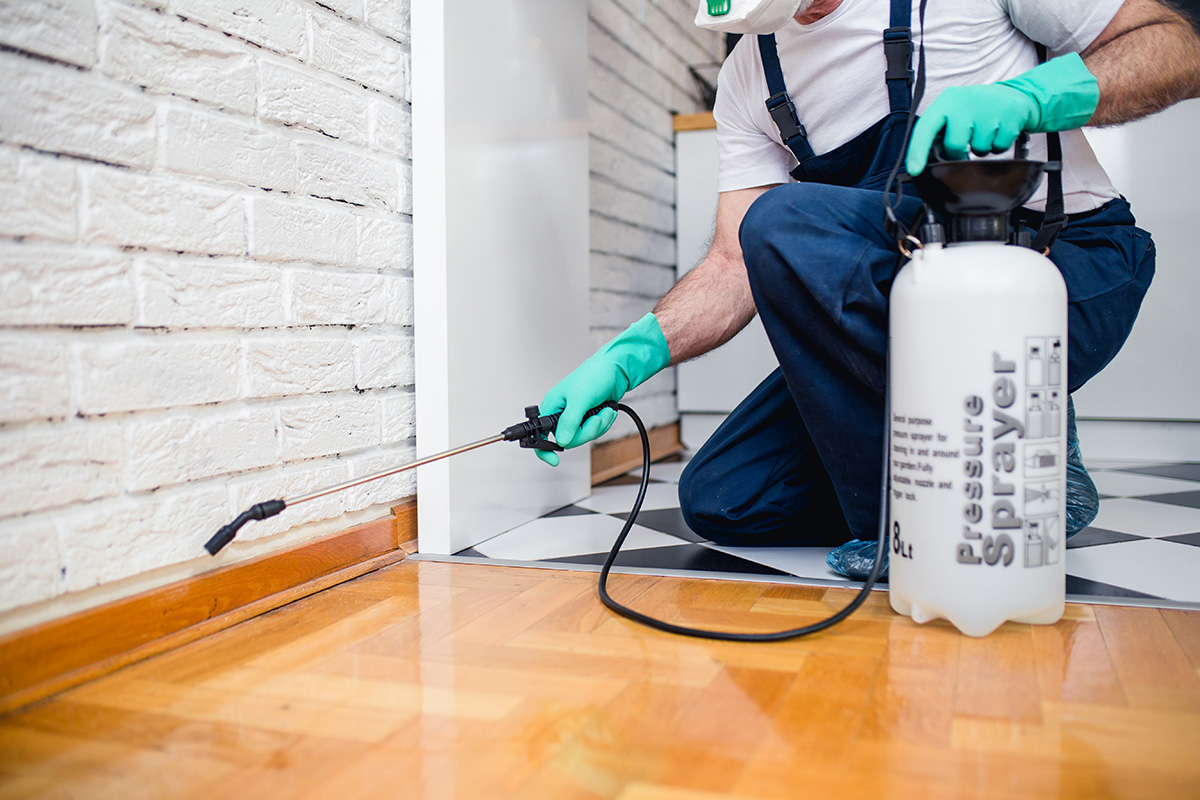A1 Charlotte Pest Control Companies - Your Regional Pest Professionals
Bed Bug Treatment Malfunction: Contrasting Chemical Vs. Non-Chemical Solutions
In the world of pest control, specifically when dealing with the relentless problem of bed insects, the selection in between chemical and non-chemical therapy options can be a crucial one. Both approaches provide distinct benefits and downsides, influencing variables such as performance, security factors to consider, and general expense. By analyzing the nuanced details of each technique, a more clear understanding of which path to pursue in attending to a bed pest invasion can be acquired.
Efficiency of Chemical Treatments
Chemical therapies for bed insect problems have actually been extensively identified for their fast and potent efficiency in eliminating these bugs. When considering the performance of chemical therapies, it is crucial to recognize that they can supply a comprehensive and fast remedy to a bed bug trouble.
Moreover, chemical treatments have the advantage of supplying residual impacts, indicating that they can continue to get rid of bed pests even after the first application. This recurring activity is especially useful in combating any kind of prospective re-infestations. Additionally, the quick action of chemical therapies can bring alleviation to people encountering serious bed bug infestations, enabling them to restore control of their space promptly.
Security Interest In Chemical Solutions
When utilizing chemical solutions for bed insect therapy is guaranteeing the security of owners and the environment,One important element that calls for careful consideration. While chemical therapies can be effective in getting rid of bed bugs, they might present dangers otherwise taken care of appropriately. One of the primary security interest in chemical options is the prospective damage they can create to human health and wellness. Direct exposure to particular chemicals made use of in bed bug treatments can lead to respiratory system problems, skin inflammation, or various other unfavorable reactions, especially in individuals with pre-existing problems or level of sensitivities. In addition, inappropriate application or dose of chemical pesticides can lead to harmful residues sticking around in the cured area, positioning lasting wellness threats to passengers.
Furthermore, the environmental impact of chemical solutions is one more substantial consideration. Some chemicals used in bed bug treatments may be hazardous to advantageous pests, wild animals, and ecological communities if they leach into the dirt or water systems. It is crucial to use chemical therapies judiciously, following security guidelines, and taking into consideration much less toxic choices to minimize these threats and make certain the effective and secure monitoring of bed insect invasions.
Advantages of Non-Chemical Techniques
Thinking about the prospective security concerns and ecological impact associated with chemical remedies for bed bug treatment, checking out non-chemical methods offers an encouraging alternative with several distinct benefits. Non-chemical treatments are ecologically pleasant, advice as they do not add to air or water pollution, making them a sustainable selection for pest control.
Additionally, non-chemical solutions can be efficient in targeting bed pests, consisting of hard-to-reach locations where chemical treatments may not penetrate - A1 pest control charlotte nc bed bugs. Techniques such as warm therapy, vacuuming, steam cleaning, and bed mattress encasements offer comprehensive elimination without the usage of dangerous chemicals.
Limitations of Non-Chemical Treatments

In addition, non-chemical therapies frequently call for numerous applications to accomplish effective elimination. This can be time-consuming and may not always assure complete removal of all bed insects and their eggs, particularly in hard-to-reach or concealed areas.
Additionally, the success of non-chemical treatments greatly depends on appropriate implementation and thoroughness, which can be challenging for individuals without expert proficiency. Inadequate application of non-chemical techniques might lead to insufficient elimination, resulting in relentless problems and the demand for added therapies.
Consequently, while non-chemical therapies have their benefits, it is important to acknowledge these limitations and consider them when identifying the most efficient method for handling bed bug infestations.
Price Contrast: Chemical Vs. Non-Chemical Options
Offered the restrictions related to non-chemical treatments, an essential facet to examine in the context of bed bug monitoring is the cost comparison between chemical and non-chemical alternatives. Chemical therapies commonly entail the application of pesticides by professionals, which can vary from $250 to $900 per space, depending upon the seriousness of the infestation and the size of the location to be dealt with. On the other hand, non-chemical therapies like warm from this source therapy or vapor can be a lot more pricey, with costs varying from $1,000 to $6,000 for an entire home. While the first expense of chemical treatments might appear reduced, several treatments may be called for to totally remove the infestation, possibly enhancing the general cost. On the various other hand, non-chemical choices might supply a more lasting and environment-friendly solution, although they can be cost-prohibitive for some people. Inevitably, when taking into consideration the cost of bed pest treatment choices, it is necessary to evaluate the ahead of time costs versus the effectiveness and lasting sustainability of the picked method.
Final Thought

Considering the possible safety and security issues and environmental influence linked with chemical services for bed bug treatment, discovering non-chemical approaches presents a promising alternative with numerous distinct benefits.Given the limitations connected with non-chemical therapies, an important element to review in the context of bed bug management is the price contrast in between chemical and non-chemical alternatives. In comparison, non-chemical treatments like warmth treatment or vapor can be much more pricey, with costs varying from $1,000 to $6,000 for an entire home. While the preliminary expense of chemical therapies might seem lower, multiple treatments may be needed to totally get rid of the problem, potentially increasing the overall cost.In conclusion, when comparing chemical and non-chemical bed bug treatment choices, it is necessary to take into consideration performance, safety and security, advantages, constraints, and price.